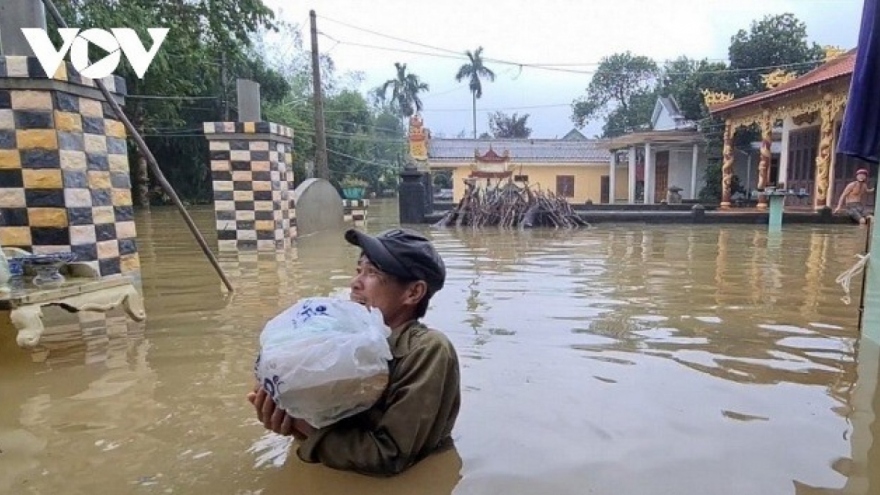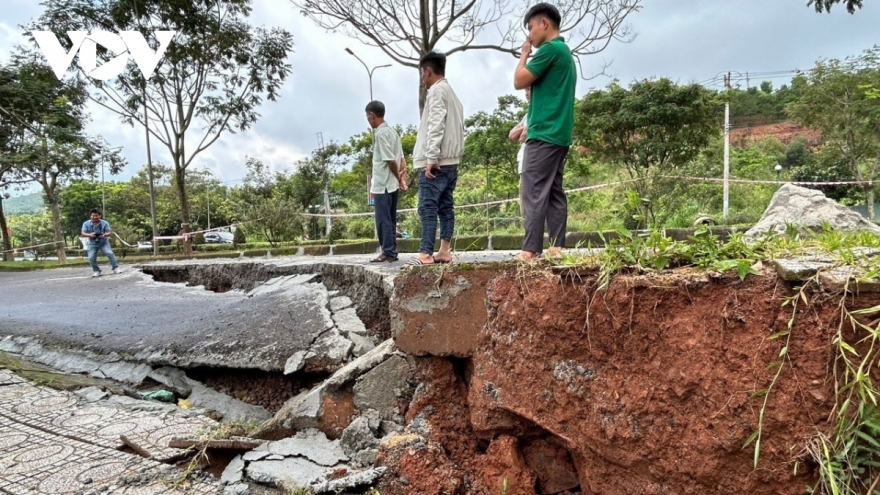Vietnam has highest number of child displacements due to natural disasters
Vietnam saw a total of 930,000 children having to leave their homes in the six-year period between 2016 and 2021 due to extreme weather phenomena such as floods, storms and drought, according to a new UNICEF report released on October 6.

Worldwide, weather-related disasters caused 43.1 million internal displacements of children in 44 countries over a six-year period – or approximately 20,000 child displacements a day, per the Children Displaced in a Changing Climate, which is the first global analysis of the number of children driven from their homes during 2016-21 due to floods, storms, droughts and wildfires, and looks at projections for the next 30 years.
Floods and storms accounted for 40.9 million – or 95% – of recorded child displacements globally between 2016 and 2021, due in part to better reporting and more pre-emptive evacuations. Meanwhile, droughts triggered more than 1.3 million internal displacements of children, while wildfires triggered 810,000 child displacements.
According to the report, East Asia and Pacific experienced an estimated 19 million child displacements linked to weather-related disasters between 2016 and 2021, representing more than 44% of the global total. Most displacements were triggered by floods, which led to over 12 million displacements, and storms, which led to over 6 million displacements.
Vietnam, together with other countries in the region such as China, the Philippines and Indonesia, is among the top ten countries that recorded the highest absolute numbers of child displacements, due to the exposure to extreme weather, large child populations and progress made on early warning and evacuation capacities.
Using a disaster displacement risk model developed by Internal Displacement Monitoring Centre, the report projects riverine floods have the potential to displace almost 96 million children over the next 30 years, based on current climate data, while cyclonic winds and storm surges have the potential to displace 10.3 million and 7.2 million children respectively, over the same period. With more frequent and more severe weather events as consequence of changing climate, the actual numbers will almost certainly be higher.
Given their large population, India, Bangladesh, Vietnam, the Philippines and China are also the five countries with the most predicted future displacements of children owing to all hazards combined (riverine flood, cyclones and storm surges, with floods being the hazard that triggers the most child displacements).
”Evidence from each of the disasters striking Vietnam confirms over and again that children are highly exposed to the impacts of the climate crisis, not just their health but every aspect of their development is affected. It is essential that as the country makes the critical and urgent switch to green energy, there are increased efforts and resources to create climate-resilient communities across Vietnam,” said Rana Flowers, UNICEF Representative to Vietnam.
Decisions to move can be forced and abrupt in the face of disaster, or as the result of pre-emptive evacuation, where lives may be saved but many children still face the dangers and challenges that come with being uprooted from their homes, often for extended periods.
Displacement, whether short-lived or protracted, can exacerbate climate-related risks for children and their families. In the aftermath of a disaster, children may become separated from their parents or caregivers, amplifying the risks of exploitation, child trafficking, and abuse. It can also disrupt access to education, healthcare, and safe water and sanitation, exposing children to malnutrition, disease, and inadequate immunisation.
“It is terrifying for any child when a ferocious wildfire, storm or flood barrels into their community,” said UNICEF Executive Director Catherine Russell.
“For those who are forced to flee, the fear and impact can be especially devastating, with worry of whether they will return home, resume school, or be forced to move again. Moving may have saved their lives, but it’s also very disruptive. As the impacts of climate change escalate, so too will climate-driven movement. We have the tools and knowledge to respond to this escalating challenge for children, but we are acting far too slowly. We need to strengthen efforts to prepare communities, protect children at risk of displacement, and support those already uprooted.”
According to UNICEF, there are practical, lifesaving steps that prepare communities and build resilience in children and adults.
For example, school readiness approaches or construction of flood and drought resistant water and sanitation systems. Preparedness work is done in non-emergency times, requiring each of the social sectors, education, health and nutrition, water, social protection and child and women protection to build resilience in the communities today, with plans for quick response when a disaster strikes.
“This includes ensuring that all children are immunised, wind-resistant tents and life-saving nutrition products are stockpiled and ready to roll out. Reducing the risks from disasters is a whole of Government accountability, and when done well, is a consistent part of long-term strategies that aim to build climate-resilient communities,” Flowers added.


